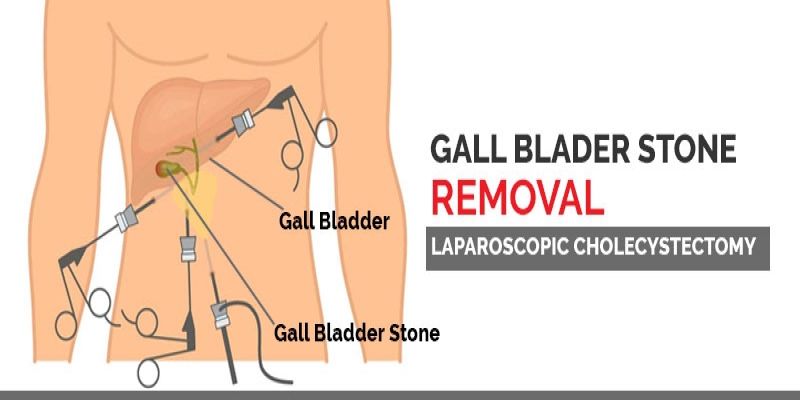All You Need to Know About Gallbladder Stones
2019-01-29 / RG STONE HOSPITAL / Gall Bladder Stone

Gallstones, or gallbladder stones as they are commonly known as, are not really stones. These are pieces of solid material formed in the gallbladder. The gallbladder is a pear-shaped, small organ that is located below your liver, on the right of your abdomen. The gallbladder has a digestive fluid known as bile that gets released in the small intestine. Gallstones can be as small as sand grains or as large as golf balls. People can develop one or multiple gallstones at one point in time. It usually does not have any signs or symptoms to need treatment. The problem arises when the gallstones block a bile duct, leading to a pain that must be treated without delay.
The Types of Gallbladder Stones :
There are Two main types of gallbladder stones and they are:
1. Cholesterol stones: These are yellow-green colored stones, which form the most common types of gallstones. More than eighty percent of the gallstones are cholesterol stones.
2. Pigment stones:These are darker and smaller stones made of bilirubin. Bilirubin is a kind of fluid that comes from the bile. Bile is made by the liver and stored by the gallbladder.
The Causes of Gallbladder Stones :
There are several reasons for the formation of gallbladder stones. It can arise from your weight, genes, diet, or problems with the gallbladder. The presence of bile is not the cause of the problem, contrary to popular belief. The body needs bile, but the gallstones can only arise when the bile has excessive cholesterol in it. It also happens when the gallbladder does not empty properly. Pigment stones are commonly seen in people with certain medical conditions, like Cirrhosis of the Liver and critical blood diseases like Sickle Cell Anemia.
The Symptoms of Gallbladder Stones :
As mentioned before, the gallbladder stones might show absolutely no symptoms and signs. If the gallstone is lodged in the duct and forms a blockage, then the symptoms and signs that can result from it include:
- Sudden and quickly increasing pain in the upper right area of the abdomen
- Sudden and quickly increasing pain in the center of the abdomen, below the breastbone
- Back pain between the shoulder blades
- Pain in the right shoulder
- Vomiting and nausea
The pain can last for hours or several minutes, and so, it is important to know when is the right time to call a doctor. Make the doctor’s appointment if you are facing any symptoms or signs that are worrying you. Seek immediate medical attention if you notice symptoms and signs of serious gallbladder stone complications, like:
- High fever accompanied with chills
- Yellowing of the skin and the whites of the eyes
- Intense abdominal pain making you unable to sit still or stay in a comfortable position
The Ways to Prevent Gallbladder Stones :
There are several ways to reduce the risk of gallbladder stones.
- Do not skip meals: Stick to the regular meal timings every day. Fasting or skipping meals frequently increases the risk of having gallstones.
- Gradually lose weight: Go slow if you feel the need to lose weight. Rapid rate of weight loss can lead to an increasing risk of gallstones as the body starts making extra cholesterol. Aim to lose not more than one to two pounds in a week.
- Maintenance of a healthy weight: Being overweight or obese increases the risk of gallstones. Aim for a healthy weight by increasing your physical activity and reducing your calorie count.
If you are experiencing the pain from gallbladder stones, consult your doctor regarding your options of treatment, which is either surgically removing the gallbladder or dissolving gallstones through medication.
Categories
Hernia Repair
Appendicitis
Piles
Urological Treatment
Hernia treatment
Enlarged Prostate (BPH)
Gall Bladder Stone
Urinary / Kidney Stone
Vitamins
Indian Health Care System
Exercise
Obesity
Female Urinary Incontinence
Single Incision Laparoscopic Surgery (SILS)
Kidney Cancer
Bladder Cancer
Ovarian cancer
Nephrology
Bariatric Surgery
Kidney Function Test
Female Urology
Radiation Therapy

